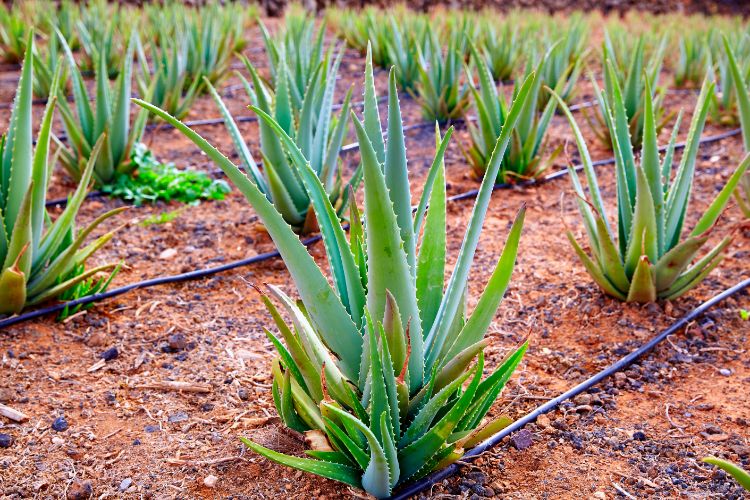Aloe vera plants are a fairly common houseplant. Not only are they an attractive plant to enhance decor, but they are very useful. The juice found within the leaves can be topically applied to cuts, burns and scrapes to help alleviate pain.
Because of the nature of succulents, their growing needs can be just a touch different than most other houseplants. Read on to see how to best care for an aloe vera plant.
Advertisement
1. Use a light, airy potting mix
The thick, fleshy leaves on an aloe plant result from water storage within the cellular tissue. Because succulents hold so much water in their leaves, they thrive in a soil that doesn't hold water. Look for light, airy potting mixes that drain quickly. Some are specifically marketed for use with succulent plants or you can make your own. The Bump recommends mixing equal parts of commercial potting soil, sand and "grit" such as perlite, pumice or gravel.

Shutterstock
2. Choose unglazed terra cotta pots
Typically growers are warned that plants in unglazed terra cotta pots require watering more frequently. In the case of aloe plants, unglazed terra cotta pots actually work in the favor of the grower. The soil will dry out more quickly, which is what the plant prefers. This is especially important in cool or humid areas where the soil doesn't dry out as quickly.

Shutterstock
3. Select pots with lots of drainage
Even if you are using a well-draining potting soil in unglazed terra cotta pots, it's still imperative pots have drainage holes at the bottom. If the pot came with a plug in the hole, remove it so excess water can freely drain when you water the aloe plant.

Shutterstock
4. Water infrequently
One of the biggest pitfalls of growing an aloe plant is overwatering! Make sure the soil dries out completely (or at least to a depth of 2 inches) before watering the plant thoroughly, allowing the excess moisture to drain.

Shutterstock
5. Bright light location
Succulents love to be in bright, sunny spots, and the aloe is no exception. When growing indoors as a houseplant, they prefer south- or west-facing windows to get as much indirect light as possible.

Shutterstock
6. Temperatures between 55 and 80
When grown inside the home, plants can withstand a range of temperatures, including dropping down to the mid-50s at night. This variance in temperature tolerance is also what makes it possible to grow aloe plants outside in areas where the climate is moderate throughout the winter and overnight.

Shutterstock
7. Fertilize sparingly
Aloe plants should be feed very infrequently and lightly so their growth isn't hindered. Feed them no more than once a month during the spring and summer using a balanced fertilizer for houseplants but about half the recommended rate.
Advertisement

Shutterstock

